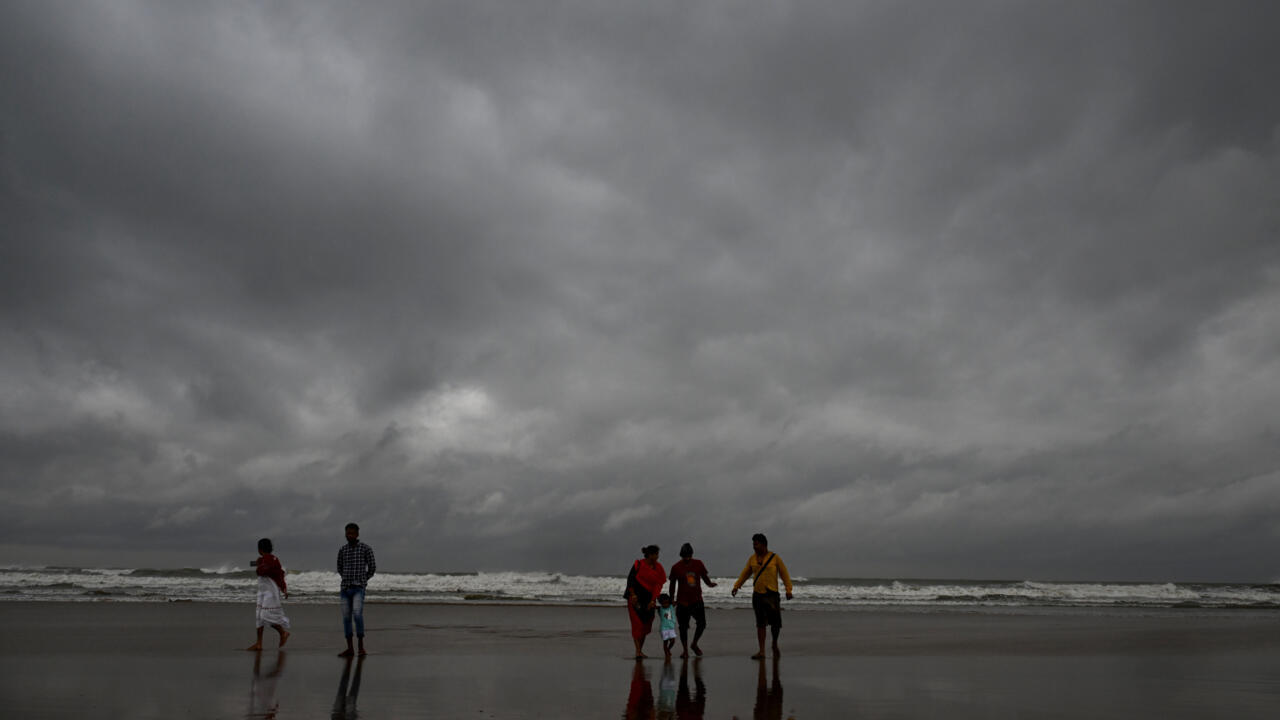Cyclone Dana is likely to hit the coasts of West Bengal and Odisha states – home to around 150 million people – as a “severe cyclonic storm”, India’s weather bureau said. It predicts winds gusting up to 120 kilometres (74 miles) per hour to cause “major damage” to thatch-roofed houses, which are common on the coast.
Government disaster response teams drove the streets, broadcasting warnings from loudspeakers urging people to take shelter.
The storm will also hit neighbouring Bangladesh, where the leader of the interim government Muhammad Yunus said that “extensive preparations” had been made.
Crashing waves are expected to inundate swathes of coastal areas, with water predicted to surge up to two metres (6.5 feet) above usual tide levels. Odisha’s health minister Mukesh Mahaling told AFP that “nearly a million people from the coastal areas” had been taken to cyclone centres. West Bengal government minister Bankim Chandra Hazra said more than 100,000 people had moved there.
Bangladesh disaster minister Faruk-e-Azam told AFP that authorities were on “high alert” but evacuation orders had not been issued as it was predicted the worst of the storm would hit India.
Cyclones – the equivalent of hurricanes in the North Atlantic or typhoons in the northwestern Pacific – are a regular and deadly menace in the northern Indian Ocean. Scientists have warned that storms are becoming more powerful as the world heats up due to climate change driven by burning fossil fuels. Warmer ocean surfaces release more water vapour, which provides additional energy for storms, strengthening winds. A warming atmosphere also allows them to hold more water, boosting heavy rainfall.
However, better forecasting and more effective evacuation planning have dramatically reduced death tolls. In May, Cyclone Remal killed at least 48 people in India, and at least 17 people in Bangladesh, according to government figures.


